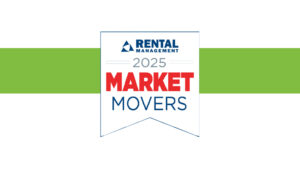There are two things we know about customers that have caused a lot of damage to an expensive item: It’s never their fault and they’re willing to argue about it for a long time.
As a rental store owner, you’re constantly weighing whether it’s worth the effort – both in time and money – to attempt to recoup damages incurred by customers. And even if it is worth it this time, is it also worth the acrimony in the relationship and the potential of losing future business?
How can you resolve these high-value conflicts in a way that keeps you and your customers happy? And how can you get the money that you feel you’re owed more often?
There are five Cs of effective conflict resolution:
- Caring
If you don’t care about maintaining this relationship or any potential repercussions, great news! The rest of the conflict management process becomes pretty easy. If you do care, though, keep your reasons in mind during the ensuing stages to help remind you why you’re working with this person. - Clarity
What’s your desired end goal of the resolution? What are each of you expecting from the other one as the relationship moves forward? If you know what you want going into an argument, you’re better prepared to negotiate. - Communication
Exchange feelings about the transaction and maintain a healthy discussion, determining if there is room for negotiation for either side. If it’s necessary, bring in a neutral third party to help find a win-win solution. - Closure
At some point, you’re going to have to agree on an outcome based on your relationship, your supporting evidence, and other case-by-case circumstances. If you’ve managed the first three steps well, you’re more likely to close the conflict in a way you’re happy with. - Commitment
Once you’ve reached an agreement, it’s important to accept the outcome, let any remaining frustration go, and move forward.
When you think about conflict resolution, you probably don’t think about your rental software – but maybe you should. It has tools that can help you move toward closure, every step of the way.
How much should you care about this relationship? Well, what’s the context of the relationship? Your rental software should tell you a customer’s history with your company – how often they rent from you, how much they rent from you, how often they’ve had issues. If someone’s been hiring consistently from you for 10 years without a problem, you’re probably willing to give them a little more of a benefit of the doubt.
Your rental software can also help provide clarity about what you expect. You can see an item’s repair history, when its last maintenance was done, what its expected value is, how much you’re expected to lose in missed rentals, and more. This allows you to create a compelling case for why you’re owed what you’re asking for.
In the communication stage, we mentioned bringing in a third party. Condition photos make for an excellent, reliable third party. Since they’re geotagged and the dates and times are included in the data, if your team is taking photos when a customer takes possession and when they return it, it’s pretty clear whether or not visible damage occurred while an item was on rent. Better still, images are attached to the contract, so finding the photos – even from old contracts – is as easy as looking up the contract in your system.
If you’d like to cut down the time you spend arguing over damages owed and chasing up debt, rental software is a great ally to have.
Point of Rental customers have recouped tens of thousands of dollars within months just by adding condition photos to their contracts. For more information on how Point of Rental can help you make more money in every aspect of your business, visit pointofrental.com or email [email protected].



